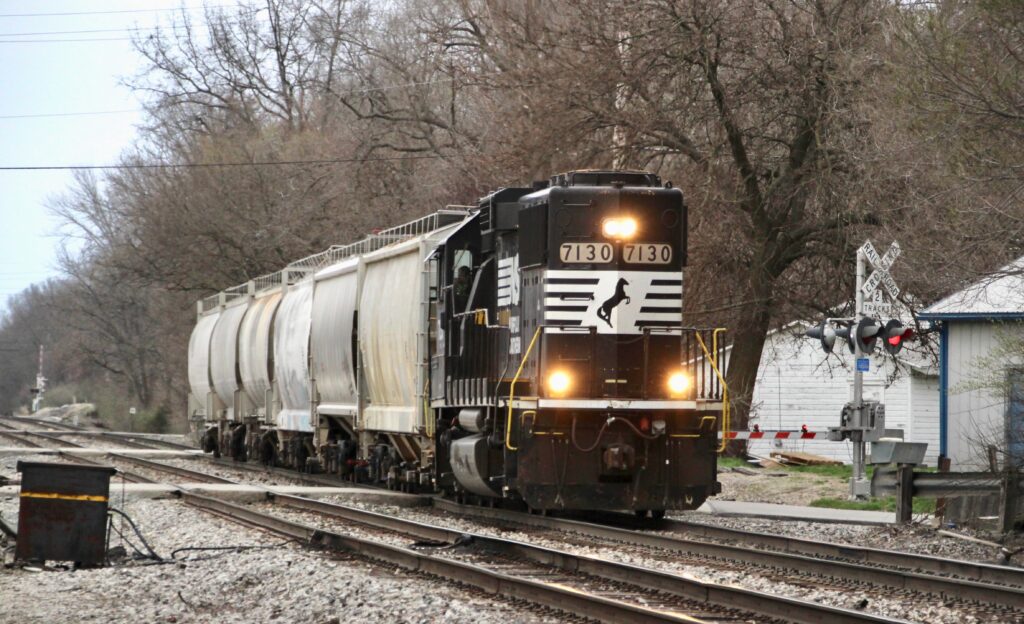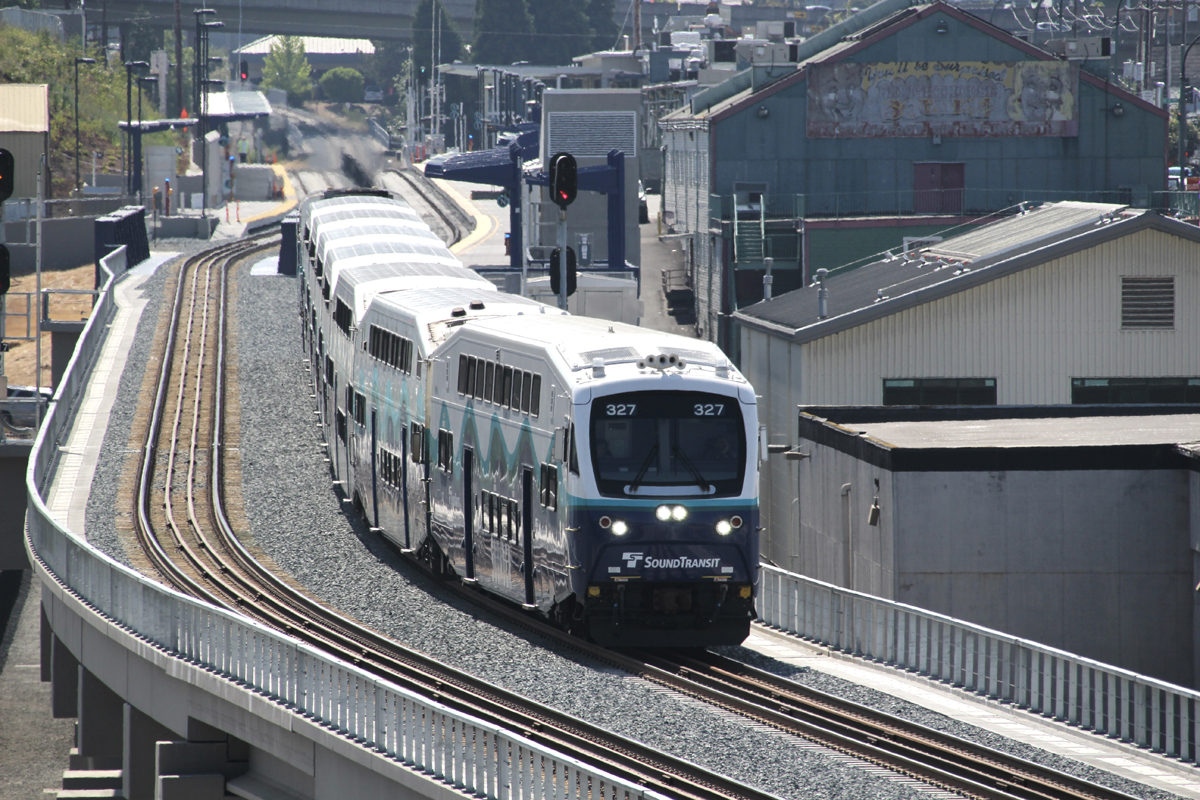
WASHINGTON — The Surface Transportation Board received numerous comments on its proposed reciprocal switching rule this week, with predictable results: Railroads say the rule goes too far. Shippers say it doesn’t go far enough. And rail labor says reciprocal switching threatens their seniority rules.
The proposed rule, which regulators released in September, sets minimum service standards and would allow sole-served shippers who suffer from inadequate service to gain access to a second railroad within the same terminal. The deadline to comment on the proposal was Tuesday, Nov. 7.
Shippers would be able to seek reciprocal switching if the incumbent railroad fails one of three service standards for a minimum of 12 weeks: Service reliability, service consistency, and first- and last-mile switching. Service reliability is based on the railroad’s initial estimate of when a car will arrive. Service consistency measures transit time. The local service standard covers how well a railroad spots and pulls cars during an applicable service window.
The Association of American Railroads warned that “forced switching orders, if deployed improvidently or indiscriminately, will have serious negative consequences for the industry and those who rely on it. To take just one facet of the issues: A forced switching order, by definition, requires alternative service that is more operationally and economically complex than existing service. Any such proposal arrives with potential downsides and unintended consequences.”
AAR said it had three broad concerns with the rule as proposed.
First, AAR says “the substance and procedures of the rule should ensure that a proceeding resolves the ultimate statutory question of whether the shipper has ‘some actual necessity or some compelling reason’ for a switching order.”
Second, AAR questions the scope of the rule and says it should not be applied to shipments that move under contracts or that involve commodities that are exempt from board regulation. This would make only a small percentage of shipments eligible for reciprocal switching as a remedy for poor service.
Third, the rule should be modified to ensure that the rule will produce “fair and well-informed adjudications.”
“AAR agrees that using service metrics to identify a potential service inadequacy worthy of further examination is an appropriate starting point. Ultimately, the Board will need to decide, under settled legal standards, whether the shipper’s petition can and should be remedied with a forced switching order, and if so, how that order will work in the circumstances of an individual case,” the AAR wrote.
The STB should clarify that reciprocal switching orders would apply only within terminal areas, AAR said, and the rule should not apply to short line and regional railroads, defined as Class II and Class III railroads – a change also sought by the American Short Line and Regional Railroad Association.
AAR also urged the STB to consider requiring service comparisons to a prior-three-year average transit time, rather than to the same 12-week period in the prior year. AAR also raised concerns about factoring in the impact of low-volume moves, which can be sporadic and more variable than shipments of unit trains or large blocks of cars.
The industry spot-pull metric is out of place, AAR said, because keeping local service the same while changing the line-haul carrier cannot remedy a local service failing.
The AAR also said the board should see how the rule functions before applying it to interline moves, which are inherently more variable than single-line service.
The six Class I railroads filed separate responses that expanded upon the AAR’s lengthy filing.
“Union Pacific believes temporary reciprocal switching should be available as a remedy to customers harmed by inadequate service if an alternate carrier could provide a superior service without compromising safety or service to other customers,” UP said in its filing. “However, Union Pacific has significant concerns regarding the [rule’s] proposed ‘objective standards’ for identifying inadequate service and certain other features of the proposed rule.”
The STB underestimates the burden of expanded service data collection, UP said, and the proposed rule doesn’t do enough to encourage voluntary resolution of service issues.
UP also was critical of the proposed duration of reciprocal switching orders. “Instead of establishing a mandatory two-year minimum term, the Board should determine the initial duration of a switching prescription on a case-by-case basis and set a term that is needed to remedy the service inadequacy,” the railroad said.
Canadian National said the board should grant additional time for railroads to analyze and digest the proposed new service metrics and performance thresholds. And the new rule should require a shipper to demonstrate that they are receiving inadequate service, CN says.
“As constructed, the proposed switching framework does not require a petitioner to allege or establish that the service it is currently receiving is inadequate or that forced switching would be an effective remedy,” CN noted.
CSX said the STB should be wary of drawing conclusions from highly variable service data.
“One of the Board’s metrics could decline for a short period in comparison to the prior year, even while the railroad was providing the best possible service under the circumstances,” CSX said. “The rail network is never static, and any metric will fluctuate regularly, particularly on a lane-by-lane basis. Given this dynamic, the [proposed rule’s] mechanical approach is ill-suited to identify service problems that could be remedied by a forced switching arrangement.”
CSX said the board could improve the process by relying on a “qualitative evaluation of whether a shipper is actually receiving inadequate service for its particular needs, the actual causes of the inadequacy, and whether a forced switch could alleviate the service problem.”
Canadian Pacific Kansas City warned that the proposed rule “might inadvertently incentivize opportunistic behavior by some shippers (and ‘alternate’ rail carriers) to take advantage of the potential for a switching remedy to improve their access … CPKC is concerned that, as currently structured, the Board’s Proposed Rule may inadvertently create incentives for some railroad customers opportunistically to seek — and for the Board potentially to award — switching orders that overreach the legitimate objective of providing a targeted and proportional remedy for demonstrated railroad service inadequacies.”
BNSF Railway and Norfolk Southern both said the rule should be modified to allow railroads to have the opportunity to resolve service problems before regulatory intervention is sought.
“Encourage collaboration between railroads and their customers before prescribing switching by establishing a brief 30-day prefiling period during which the incumbent can work to cure any service deficiencies,” BNSF suggested. “It would be in the interest of all shippers — both the complaining shipper and those who might suffer the unintended market consequences of regulatory intervention — to achieve better service, if possible, without the burdens that regulatory litigation imposes.”
Individual shippers and the various shipper trade groups were disappointed that the STB shelved a 2016 proposal that would have increased rail competition by granting sole-served shippers access to a second railroad through reciprocal switching.
A coalition of the American Chemistry Council, The Fertilizer Institute, and The National Industrial Transportation League also urged the STB to significantly raise the service standards railroads would have to meet in order to avoid a potential reciprocal switching request. They encouraged the board to dramatically increase the term of a service-related reciprocal switching order to five to 10 years. And they made three recommendations on how the STB could further address competitive access issues.
“First, the Board should expand its current proposal to all bottleneck segments …which … authorizes the Board to short-haul a carrier to address inadequate service in a through route prescription just as it can through a reciprocal switch prescription,” the coalition said. “Second, the Board should open a separate docket to consider the unique questions surrounding the prescription of trackage rights as an additional remedy for breach of the ISP service standard.”
The groups also asked the board to develop and solicit other proposals to increase rail competition.
Chemical manufacturer LyondellBasell said the proposed rule falls short on both service and competitive access. “The proposed rules that the Board served … fail to provide adequate thresholds and processes for reciprocal switching to meaningfully address inadequate service,” the company said. “Moreover, LyondellBasell urges the Board to continue pursuing increased access to reciprocal switching for rail customers without access to competitive rail transportation. Rail carriers must remain sufficiently incentivized to provide differential and ever-better performance in their operations, and competition would provide this incentive.”
Shippers also said the STB has the authority to include contract and exempt traffic under its proposed service standards.
The labor unions that represent opposite sides of the locomotive cab had different views about the proposed rule.
The SMART-TD union, which represents conductors, said it “applauds this effort and supports STB in its goal to address these large-scale problems. There is concern about the specifics of how reciprocal switching would work within the boundaries of our long-established collectively bargained agreements, and how it could be done without treading on the seniority rights that have long been established in our industry’s workforce.”
The Brotherhood of Locomotive Engineers and Trainmen maintains “that reciprocal switching does not solve the service issues created by rail carriers. Further, reciprocal switching would create numerous adverse impacts upon the scope and seniority provisions within collective bargaining agreements. It would impair the safe operations of crews on both the host and guest railroads. Current longstanding rules and precedent should not be departed from due to a perceived solution that is non-existent and not provided for by a practice labeled ‘reciprocal switching.’”














If I remember correctly, it appears this problem was basically caused by railroads reducing the # of days of local switching to its customers. Many complained they got fairly decent on time shipments with minimum delays until the # of switches per week were reduced, some to just one day a week. The carriers will do almost anything to keep from calling a crew. That places one, two cars per month customer in a quandry.
if the railroads, class ones in particular, were actually taking care their customers instead of Wall st they wouldn’t be having this problem.
Congratulations Class Ones! You ignored the public…YOUR CUSTOMERS BY THE WAY… and now the other shoe is about to DROP. The only way to avoid this is to get back to serving your customers, NOT INCLUDING WALL STREET. Just the ones who ship and receive cars via your railroad. If you won’t do that simple task, then you deserve every line of regulations that you are saddled with. Didn’t the early years of deregulation teach you anything? Money can be made by proper administration of your public obligation as common carriers. But the minute you ignore the customer, the very reason for your business, you begin again the downward spiral. You have no one to blame but yourselves if this passes.
Yes, and RRs try to ignore Amtrak as well which is also a customer,
Simple solution is for railroads to simply do their job. Their job is to pick up and deliver railcars, not just move them across their network. Customer is not currently the focus.
Best post (above) in the entire history of these comment pages.
Are all rail employee’s going to be qualified on everyone else railroad? And are the dispatchers going to let the others carrier on their lines? I see a lot of problems.
Can of worms, Pandora’s box, whatever …. Just looking for trouble.
Totally agree with you Charles. Complicated!